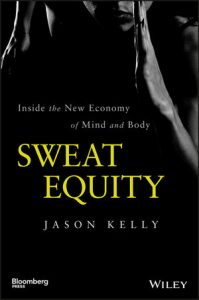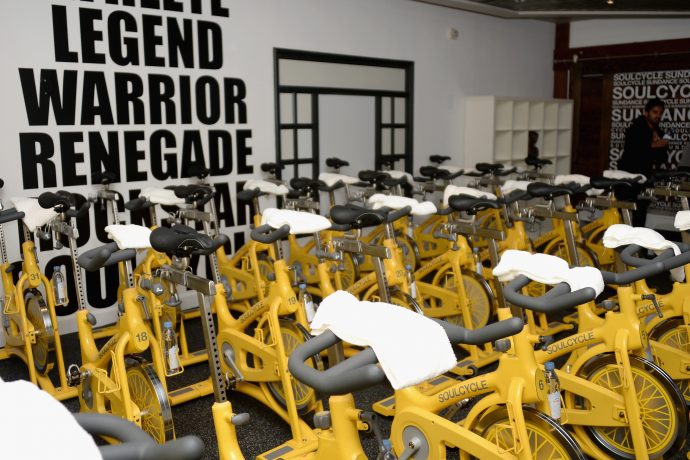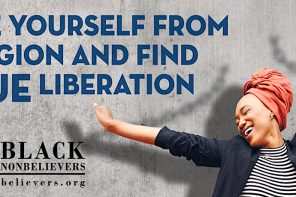The body is big business. The Sports and Fitness Industry Association estimates that it generated $84.3 billion in wholesale sales in the U.S. alone. If you include food, gyms, studies, clothing and equipment, that number increases dramatically to half a trillion U.S. dollars. Add the category of “wellness”—spas, workplace wellness, mindfulness programs—the figure jumps to $3.4 trillion.
 Sweat Equity: Inside the New Economy of Mind and Body
Sweat Equity: Inside the New Economy of Mind and Body
Jason Kelly
Wiley Press
(April, 2016)
Wellness, of course, is where the mind meets the body—as well as the spirit, it would seem. Indoor cycling titan SoulCycle, for example, is “church” for many of its devotees (as covered here in RD) and yoga continues to trouble boundaries between “authentic” religion and popular, secular practice.
In Sweat Equity: Inside the New Economy of Mind and Body, journalist Jason Kelly traces the connections between money and fitness culture. He recently spoke with The Cubit about running highs, meditation apps, and the inherent difficulty of selling authenticity.
This interview has been edited for length and clarity.
You argue that Millennials treat fitness—and especially group fitness classes—as an alternative to church. What’s the appeal?
I think it’s the real desire for togetherness, but more importantly for physical proximity to people. I firmly believe that group fitness—whether it’s boutiques or running clubs or cycling clubs—are a reaction to our relatively superficial interactions over social media. We’re hyper connected on Facebook and Twitter and Instagram and everything else, and yet I think there is a very human need for deeper connection.
I think people find that in exercise.
For Millennials specifically, exercise and health is much more of a default state than it was for previous generations. In the book I say that Baby Boomers are the first generation to sweat instead of smoke, but they raised Millennials to think more about their health. It’s more hardwired into Millennials as a generation.
Exercise ultimately feels good, not only physically but also from a mental health perspective. Part of the reason I think people seek out religion is to feel better about a higher purpose, to feel like there’s something larger than themselves. It’s easy when you are out running, either by yourself or with a group, to feel that there’s something bigger than you going on.
In your book you explore those two sides of fitness culture: individual experience, on the one hand, and group dynamics on the other. How do those interact?
I’ve thought about this on a very personal level because running is my main thing. Ultimately, there’s nothing more individual than running in the sense that you’re totally self-propelled. There’s no real team aspect to it, I can’t run for you, you can’t run for me. Ultimately it’s you on the road or on the trail. There is a communion, and I use that word purposefully, especially when you’re on a run in nature.
I do think that there is a human desire to share this communion as well. In those situations where you’re able to achieve something meaningful for yourself, it also opens you up to a certain level of intimacy with other people—a spiritual and very human intimacy. Friends of mine who I’ve run with have said this before, that there’s an authenticity and a rawness and even a nakedness that you feel emotionally when you’re running with other people.
I have told people things on runs—and been told things—that I don’t think I would have said or heard otherwise. We joke that what’s said on the run stays on the run. I think that’s in part the appeal. That’s where I see the nexus, as it were, that as an individual you are experiencing the profound and that makes it possible for you to connect with other people in a deeper and more meaningful way.
Group fitness is also a big business. Does the spiritual dynamic of group fitness change when it’s monetized?
Millennials bristle at anything that’s inauthentic or overly commercial. I think that [fitness] companies do have to be careful about being too nakedly commercial about their ambitions. Especially when you get into the realm of mindfulness or proposing to help people on a spiritual level.
There’s a fine line between being helpful and being a huckster—an old-fashioned traveling preacher moving from town to town. I think there is a certain balance that people have to strike. What we do see, though, is that the people who are drawn to pursue fitness as a career generally come from a place of personal passion and commitment.
While there are people of color in your book, race isn’t a dynamic that you explicitly analyze. I’m curious if you have any thoughts about how race factors into the realm of the business of exercise. What do you make, for example, of the appropriation of “Eastern” traditions like yoga, meditation, and the Color Run?
I dealt more with socio-economic aspects rather than race, and I do think that this [is] a very affluent trend. One of the [topics] that I explore is how the fitness boom is happening at a time [when] we’re also seeing the highest obesity rates in history. This is certainly a reflection of the broad income divide. One’s ability to spend the time and money on a full cycle class… by its very nature this indicates that you have a certain amount of resources. I didn’t explore the race component very much. I would say, generally, that boutique fitness and endurance sports certainly skew pretty hard white.
I think yoga is fascinating when you look at the history of it, in the sense that it and I’m using very broad brush strokes here, but that it effectively evolved from warrior training, male-only warrior training 2,000 years ago to fast forward to last century and it’s this kind of hippy practice, then it’s kind of taken up later primarily by women—and candidly, affluent women. Now it is starting to include more men as it in some ways takes on or “rediscovers” some of the aspects that made it warrior training in the first place, the rigorous aspects of it.
I guess I don’t see the appropriation as much because I think generally people come to it from a place of respect rather than wanting to diminish an institution or a practice in anyway. For example, I use the Buddify App, which I find very helpful for me because it has meditations that you can do while you’re walking to work. Is that a deep meditative practice? No, it definitely is not, and yet it works for me and I do it in, I think, a respectful and honorable way.
In the book you predict that “the body is only going to be a bigger business.” Are there downsides to commodifying fitness? Or will the relationship between bodies and business be mutually beneficial?
I think the downsides come when people essentially go too far. When it not only becomes a life style but it turns into a little bit of an obsession. In my research I discovered people who were recovering alcoholics and addicts who stopped drinking or abusing drugs and then took up exercise, and then that effectively became their addiction.
What I worry about at a micro level is that people get too obsessed with “getting the miles in” or doing harder and longer races to the point where they hurt themselves, or hurt their relationships with their families because they’ve got to do that 100 mile bike ride on Saturday morning.
From a macro level I think that there’s maybe less to worry about in the sense that I think a generally healthier population is a good thing. Healthcare costs go down, there’s some long term implications if all of a sudden we all get healthier and we start living to 100 or 110 or 120 years old. Then maybe there are some societal things that have to happen around how we care for the aged and retirement ages and things like that, that’s a whole other discussion. Generally I think the megatrend, as it were, is good.
Also on The Cubit: Put Your Money Where Your Mind Is: A For-Profit Meditation Studio Opens in New York
Follow The Cubit, RD‘s religion and science portal, @TheCubit.





